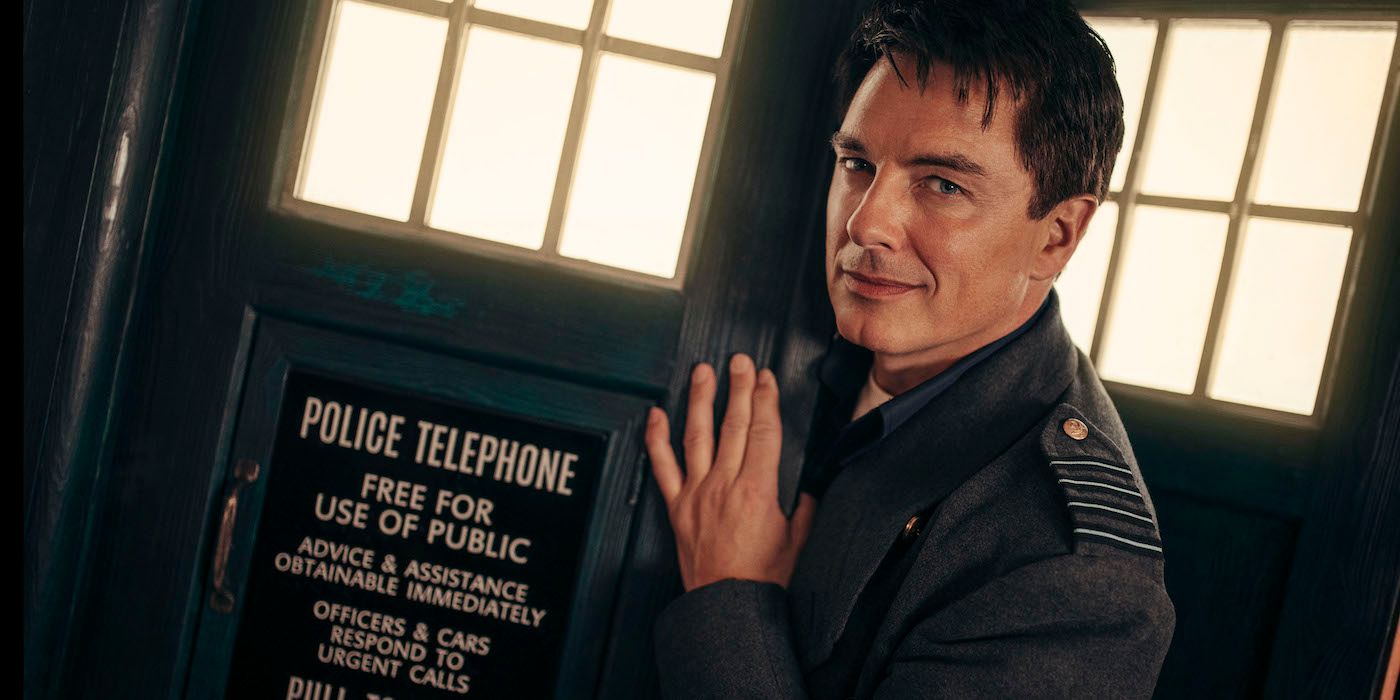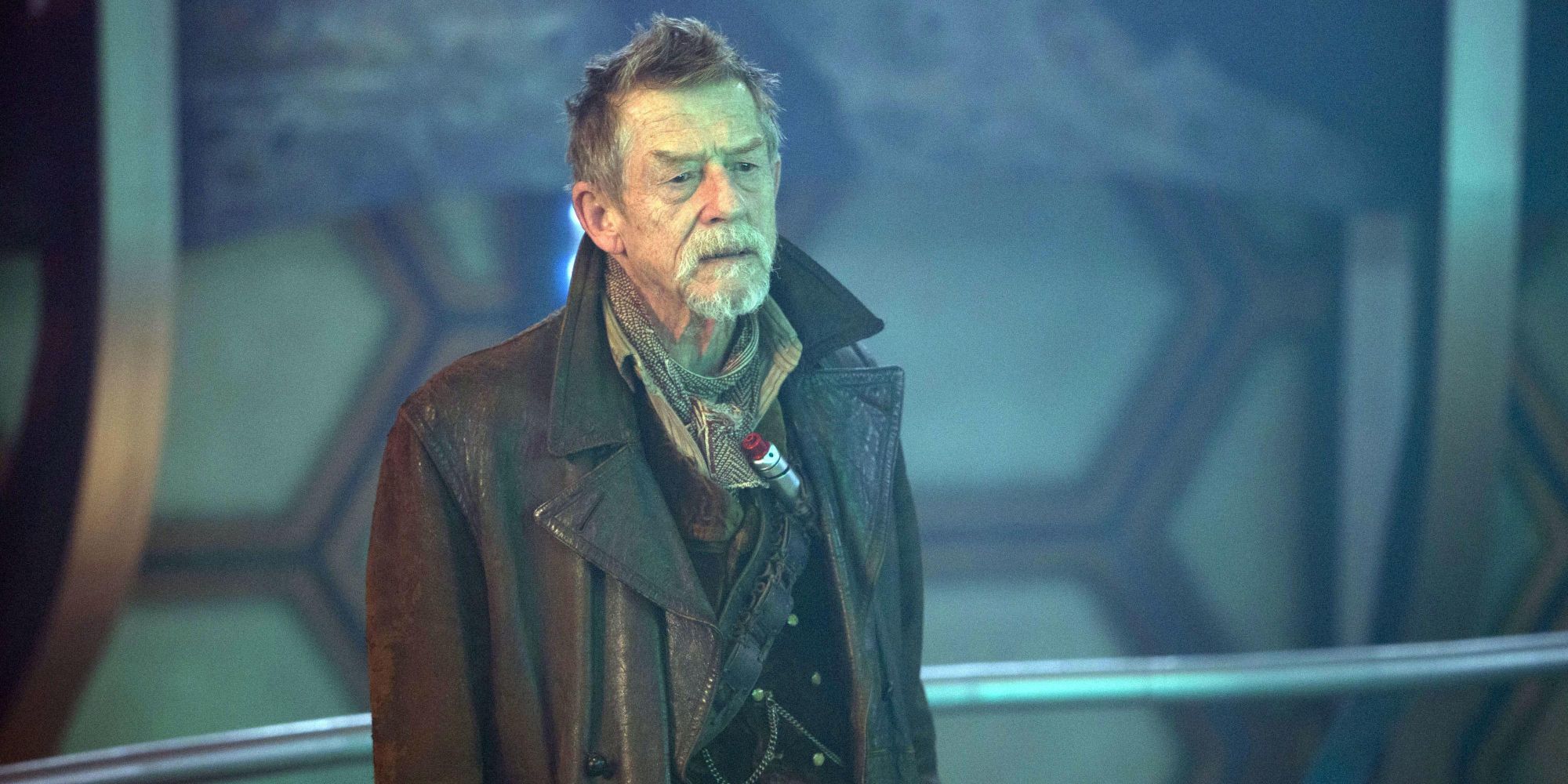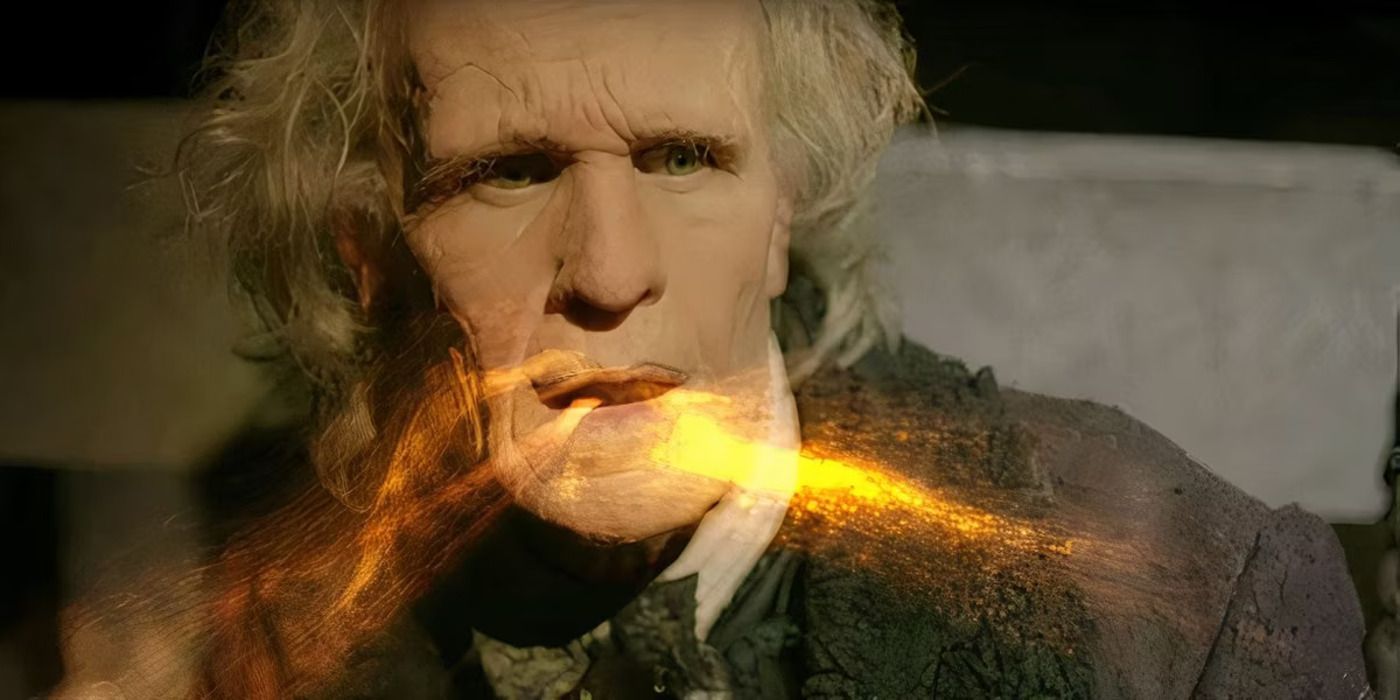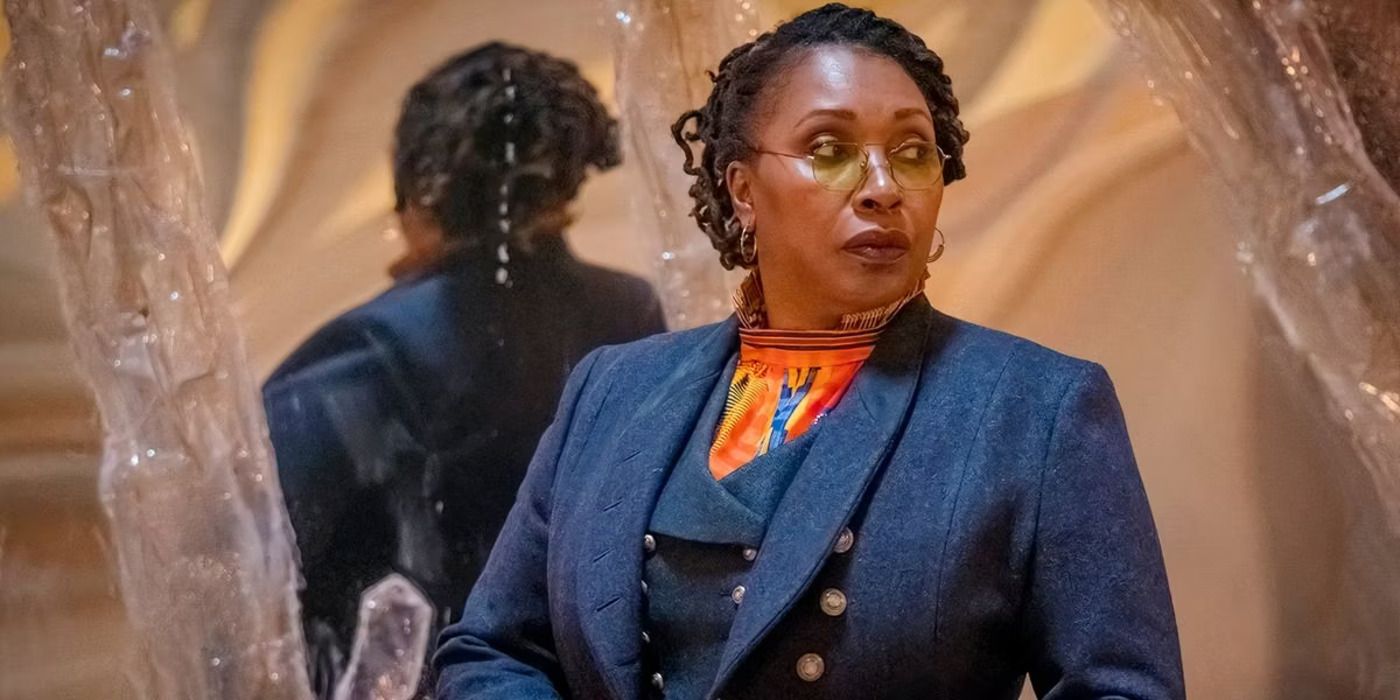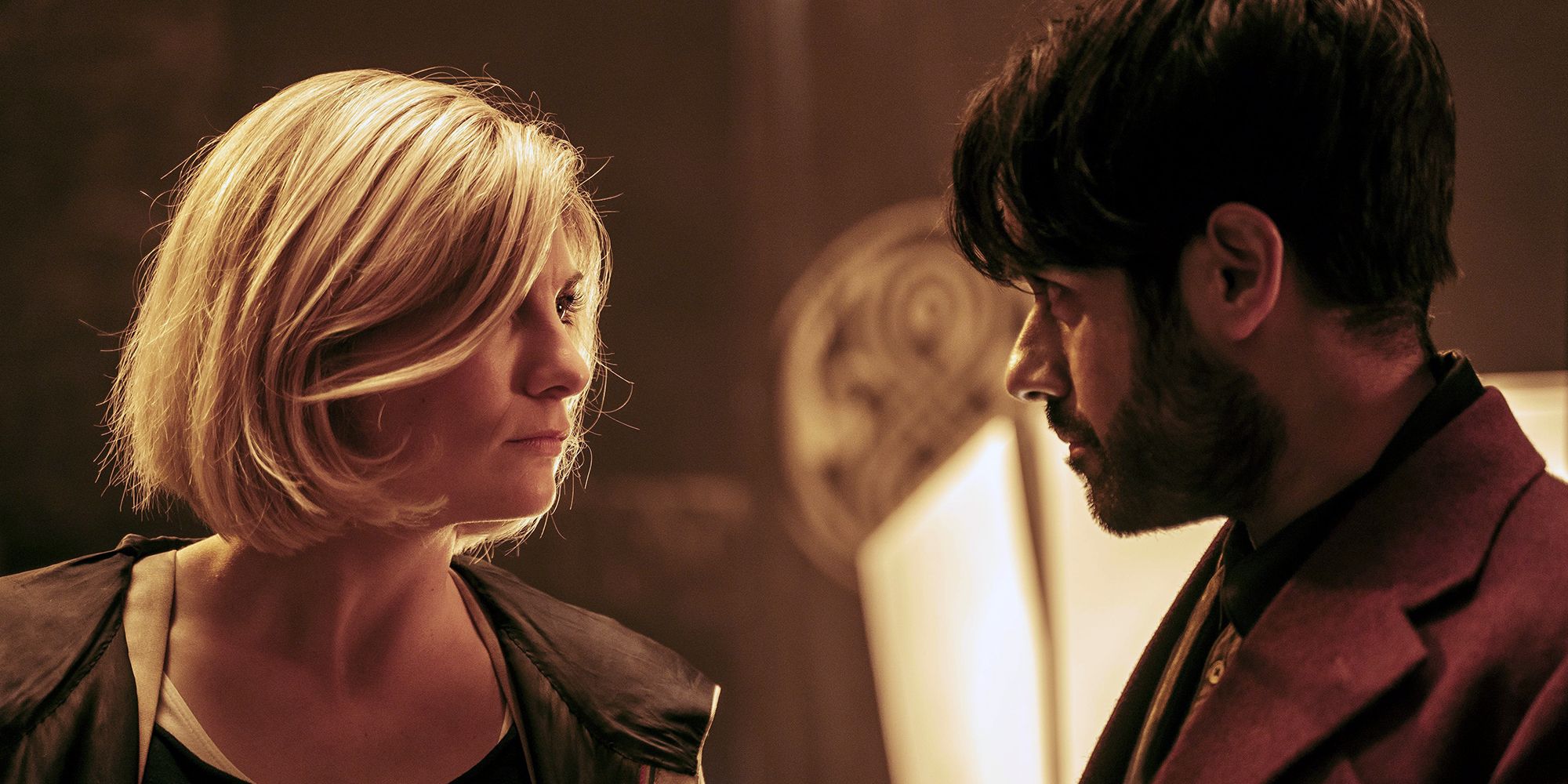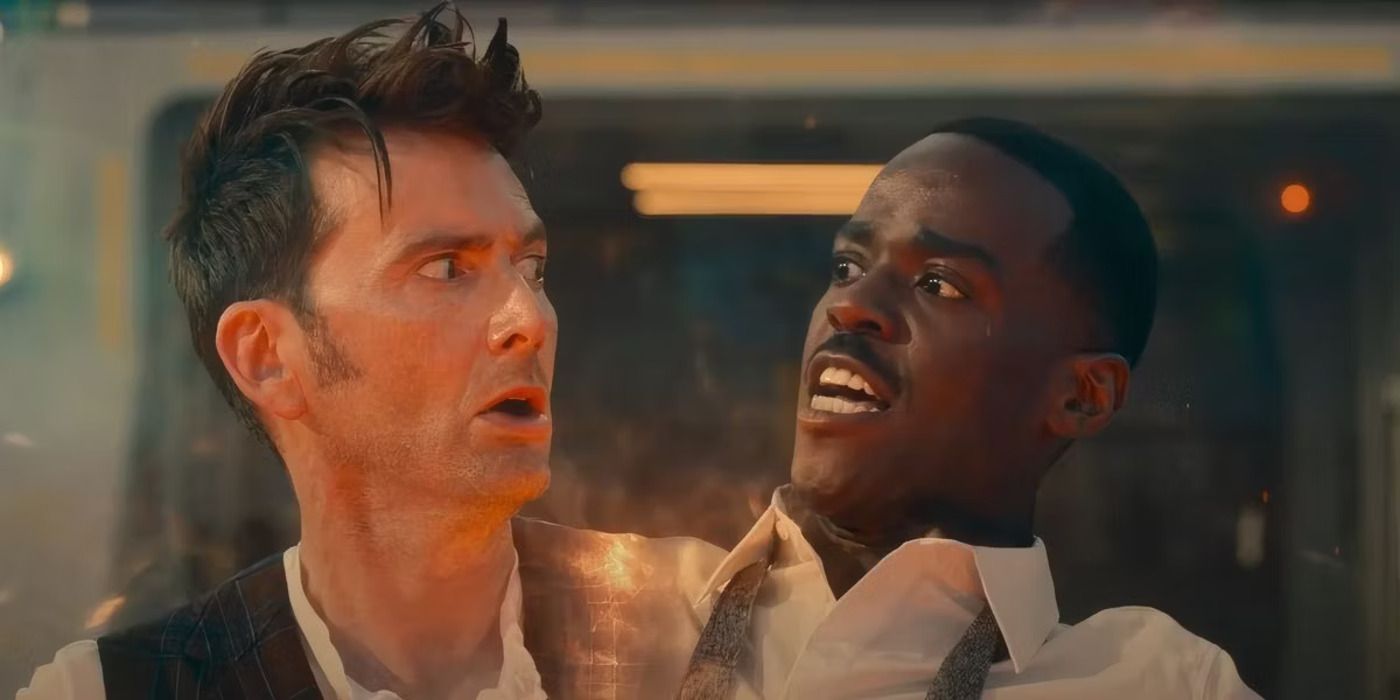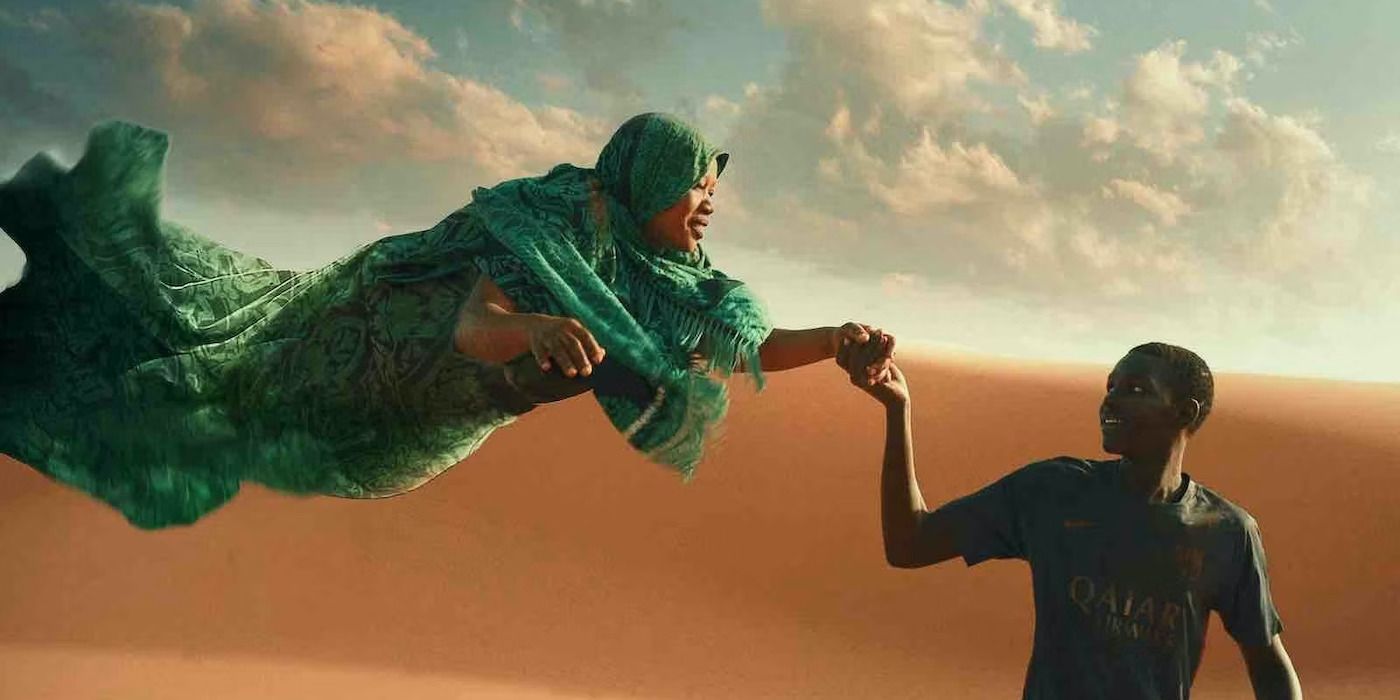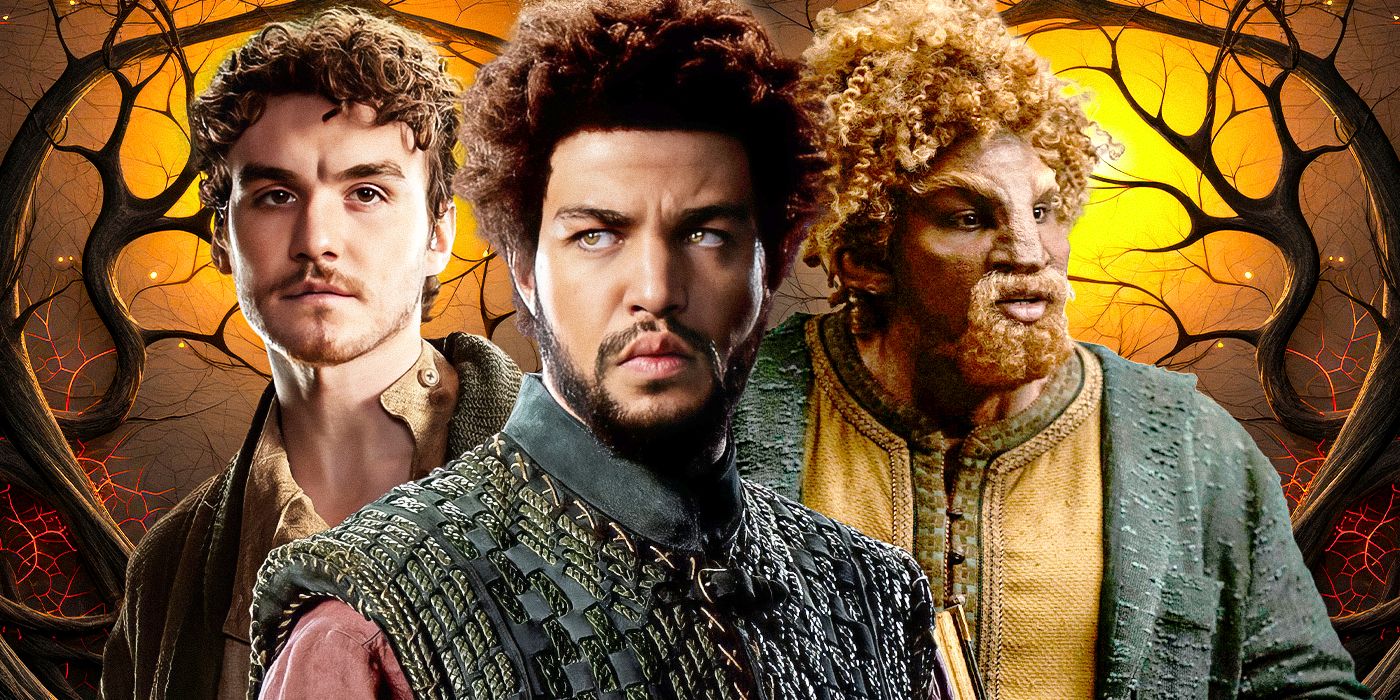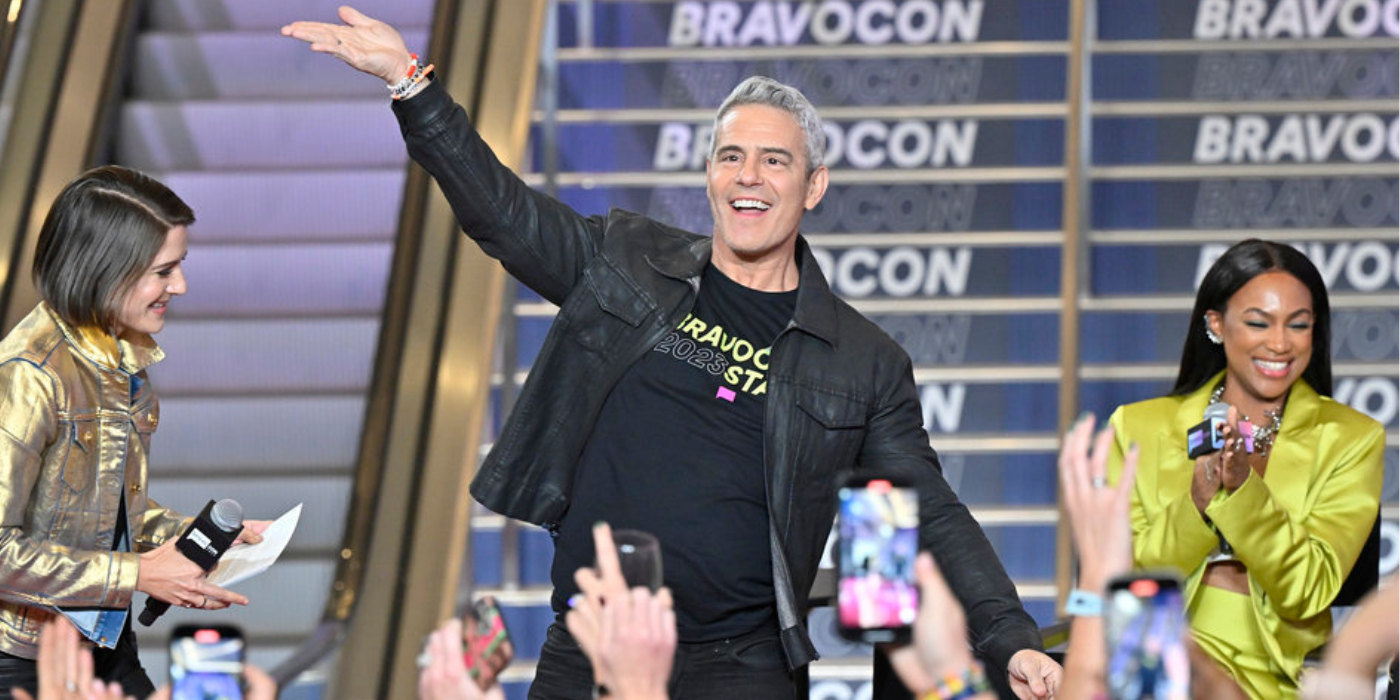With the first season of new era Doctor Who wrapped up on Disney +, new viewers may be wondering how to sort through the important milestones of the series’ history and seasoned viewers might want to refresh their memories. After all, 60 years of amazing storytelling is alot to keep track of. Taking a trip in the TARDIS can be a dazzling and somewhat confusing experience for neophytes and navigating Who lore can be daunting for even the oldest fan.
Each era of Doctor Who has had episodes with defining moments that have shaped and changed the mythology of the Doctor, sometimes to the consternation of fans who hold Who canon sacred. But for a show to last 60 years it has to remain dynamic, and that means change is inevitable. Thankfully, these changes have tended to deepen the mythology further, keeping the mystery of the Doctor fresh and alive for each generation of viewers. These are some of the biggest game-changing moments in Doctor Who history.
Doctor Who
- Main Genre
- Sci-Fi
- Seasons
- 14
- Studio
- BBC America
10 The First Doctor Regenerates
“The Tenth Planet,” Season 4 (Classic)
William Hartnell is the actor who started it all. His First Doctor is an irascible, cranky old alien traveler whose softer side comes through in his relationship with his grandaughter Susan (who was recently referenced by Ncuit Gatwa‘s 15th Doctor in the latest season finale of the show after decades of being virtually ignored by previous Doctors). He led the show to great success on the BBC for three seasons, but by the fourth his health was beginning to fail.
Needing to find a new actor to replace him, Doctor Who writers came up with a brilliant concept — the ability the Doctor has to regenerate every cell in his body and transform into a new physical form. Later termed “regeneration”, it has played an important part in the longevity of the series by allowing for the lead actor to change and giving the series a fresh take every few years.
After defeating the Cyberman (a classic Who villian that was also introduced in this serial), an ailing Doctor retreats to the TARDIS where companions Polly and Ben find him unconscious and witness his amazing transformation into Patrick Troughton, who would continue in Season 4 as the Second Doctor. Early Doctor Who stories were told as serials — four-episode story arcs — and sadly, “The Tenth Planet” has one episode missing due to the BBC’s policy in the late 1960s and 70s of wiping out old shows after they aired so that tapes could be reused. The missing episode happens to be the one in which the regeneration occurs; however, clips of the regeneration sequence remain and can be found on YouTube.
9 The Time Lords
“The War Games,” Season 6 (Classic)
The Patrick Troughton era of Doctor Who added some new things to the canon, including Earth’s establishment of the United Nations Intelligence Taskforce — UNIT– to work with the Doctor against alien threats. It was introduced in the Troughton-led serial “The Invasion” and most recently plays a major role in the two-part finale of the current season on Disney +. But perhaps most importantly, the Second Doctor introduces us to Galifrey, his home planet, and his people — a race of time-traveling beings known as the Time Lords in Troughton’s last serial “The War Games”.
We learn that the Doctor is actually a fugitive from Galifrey, having stolen the TARDIS in order to save the universe from various evils, and the Time Lords have been looking to bring him to justice. He risks his own capture when he enlists their aid in stopping another renegade Time Lord known as the War Chief from creating a super-army of soldiers to conquer the Galaxy. After thwarting the plot, the Time Lords put him on trial for his TARDIS theft and for breaking their law of non-interference (which states that no Time Lord shall interfere with the events of any other planet or culture).
The Doctor cites his many battles against evil as his defense. Still, the Time Lords determine he must be punished by forcing his regeneration and exiling him to 20th century Earth. The Doctor’s love-hate relationship with his people (and himself) is one of the most enduring and compelling aspects of Who mythology.
8 Daleks and the Time War
“Genesis of the Daleks,” Season 12 (Classic)
The Doctor’s number one nemesis and the most popular and iconic villains of the series, the Daleks – a Nazi-like merciless race of cyborg aliens bent on the domination and extermination of any lifeforms not Dalek- were introduced with the First Doctor in “The Daleks” written by Terry Nation. Nation’s work established them as super-villains (and the Doctor as a crusading force against oppression in the universe), but it is the evolution of their story in classic Who – particularly with Doctors 4, 5, and 7 that leads to the key element of Who mythology that Russell T. Davies would use in 2005 to reboot the series — the Time War.
According to Davies, it all starts with “Genesis of the Daleks” when the Time Lords task Tom Baker‘s Fourth Doctor to go back in time and stop the creation of the Daleks by a scientist named Davros on the war-torn planet of Skaros. Unable and unwilling to wipe them out entirely, the Fourth Doctor only manages to delay their evolution. So when they return in “Ressurection of the Daleks”, they are out for revenge against Peter Davison’s Fifth Doctor, seeking to replace him with a deadly android duplicate. The plot is thwarted, but the Time War mythology continues on in “Remembrance of the Daleks” when Sylvester McCoy’s Seventh Doctor attempts to use a deadly Time Lord device to defeat the Daleks once and for all. He’s not entirely successful and thus ends up triggering the Time War. Used by Davies as an attempt to bridge the end of classic Doctor Who in 1996 with the reboot in 2005, The Time War pits the Time Lords and Galifrey against the Daleks and their planet Skaros. It ends with the apparent destruction of both races, something the Doctor most definitely had a hand in. Although the war itself happens “off-stage”, its effects can be seen in the agony, guilt, and weariness of the new Doctor, Number 9.
7 The Ninth Doctor
“Rose,” Season 1 (Modern)
When Christopher Ecclesten made his first appearance as Doctor Number 9, the show had been off-air for 16 years. On top of that, it was now the 21st century and audiences had changed. Doctor 9 reflects all of that. Gone is the eccentric, breezy, professorial persona of classic Who. 9 is a mysterious, leather-jacketed action hero who rescues young shop assistant Rose Tyler (Billie Piper), not only from an attack by mannequins come to life, but from her tedious life in London when she joins him as his new companion.
New show-runner Russell T. Davies establishes a darker, more emotionally complex version of the character through him that really defines modern Doctor Who. In the episode “Dalek”, audiences can see how the Doctor has been haunted and traumatized by the events of the Time War, something that sees its culmination in the 50th anniversary special “Day of the Doctor.”
6 Captain Jack Harkness and the Face of Boe
“Last of the Time Lords,” Season 3 (Modern)
Two of Russell T. Davies’ most mysterious and beloved (not to mention immortal) characters have a special connection that is still debated amongst some Who fans. Captain Jack Harkness (John Barrowman) makes his first appearance alongside the Ninth Doctor as a Time Agent turned con man with a brash and flirty nature who quickly becomes one of the Doctor’s most loyal companions. By the Season 1 finale, his destiny is completely changed when he is killed by a Dalek and Rose, having absorbed the heart of the TARDIS for a brief time, brings him back to life and in the process turns him into an immortal. His assistance has been invaluable to at least three of the Doctor’s incarnations (most recently with Jodie Whittaker‘s 13th Doctor), not to mention heading up Torchwood in a spinoff series. He’s also the first openly bisexual character in the show’s history.
The Face of Boe also makes his first appearance as the 9th Doctor in an episode called “End of the World”. An ancient, wise and powerful head in a jar, he is the last of the mysterious Boekind and imparts secrets to the Doctor because he is a man like him — a wanderer, a man without a home, and the last of his kind. The Face of Boe seems to know the Doctor well somehow, and in their last encounter he tells the Doctor perhaps the most important secret of all – he is not alone, not the last of the Time Lords after all.
But the connection between these two characters isn’t revealed until the 10th Doctor(David Tennant) and companion Martha (Freema Agyeman) run into Jack, and he mentions that during his stint as a Time Agent he was the only person to come from the Boeshane Peninsula and his fellow agents used to call him the Face of Boe. The exchange implies that the immortal Captain Jack will eventually evolve into the Face of Boe from the Doctor’s travels. This has led to debate about whether this is true, fueled mostly by the fact that Davies himself has never confirmed the two characters being the same. Still, most fans have accepted it as canon.
5 The War Doctor
“Day of the Doctor,” 50th Anniversary Special (Modern)
John Hurt‘s brilliant turn as Doctor 8.5, the one who ends the Time War by aiding in the destruction of both the Time Lords and the Daleks, provides the missing link between classic Doctor Who and the modern era. He is the Doctor’s darkest secret, the version of him that haunts him the most and the one he cannot accept. First appearing with Matt Smith’s Doctor 11 in “The Name of the Doctor”, he teams up with Doctors 10 and 11 in “Day of the Doctor“ to try to put right what went wrong. “What I did, I did without choice,” he says, “in the name of peace and sanity”.
Showrunner Stephen Moffat had a lot of gaps to fill in to make the War Doctor’s story connect the classic with the modern era. In a mini-episode he wrote called the ‘Night of the Doctor‘, Paul McCann‘s 8th Doctor is saved from a spaceship craft by the Sisterhood of Karn, who persuade him to become a warrior and end the Time War. His regeneration as the War Doctor follows. The events of “Day of the Doctor” give him a second chance to save his people and, with the help of all of his previous incarnations, he is able to hide Galifrey in a pocket dimension, causing the Daleks to crossfire and destroy themselves.
4 The Resurrection of Galifrey
“Time of the Doctor,” 2015 Christmas Special (Modern)
After the events of “Day of the Doctor” bring Galifrey back from extinction, Matt Smith’s 11th Doctor is determined to find them. This he does in his final adventure as the Doctor, “Time of the Doctor”. Thousands of aliens are circling the planet Trenzalore due to a mysterious message emanating from a crack in reality. It turns out to be the Time Lords attempting to escape from their pocket universe and ask the Doctor to announce his name to give them a sign when it is safe to emerge. With the Doctor there, the aliens cannot attack Trenzalore for fear he’ll let out the Time Lords, and if he leaves the planet they will destroy it to keep the Time Lords from emerging.
Centuries pass in this stalemate, and companion Clara (Jenna Coleman)finds the Doctor dying of old age. Knowing he has no more regenerations left (classic Who canon specified the Doctor could have only 12), he is resigned to his fate. But Clara is able to talk to the Time Lords and convince them to bestow another cycle of 12 regenerations on him. This allows him to transform into Peter Capaldi’s 12th Doctor, who will have his own confrontations with the Time Lords and Galifrey until his next incarnation, Jodie Whittaker’s 13th Doctor, destroys them once again. The Time Lords can be one of the Doctor’s biggest adversaries or saviors depending on their mood, and we’ll likely see them again, as Ncuti Gatwa’s 15th Doctor, seems to have set the stage for another resurrection of Galifrey in the latest season finale.
3 The Ruth Doctor
“Fugitive of Judoon”, Season 12 (Modern)
No iteration of Doctor Who has added more game-changers than Jodie Whittaker’s 13th Doctor. Showrunner Chris Chibnall has essentially rewritten the entire history of the Doctor (much to the annoyance of canon purists) by introducing another forgotten incarnation — Ruth Clayton(Jo Martin), the Ruth Doctor. As it’s not clear where she fits in the timeline of Doctors, she has no number, but the story in “Fugitive of the Judoon” seems to suggest she might even pre-date William Hartnell’s First Doctor.
When the Judoon police force show up on Earth looking for a dangerous fugitive, the Doctor attempts to help mediate and resolve the situation. In doing so, she finds the mysterious Ruth Clayton. At first, Ruth has no idea of her past as a Time Lord and believes she’s human. But slowly her memories come back, and she realizes that not only is she a Time Lord, she is the Doctor herself. Unlike other multi-Doctor episodes of the series, these two have absolutely no memory of each other, which suggests there could be more versions of the Doctor than anyone realized.
2 The Timeless Child
“The Timeless Children,” Season 12 (Modern)
Another huge game-changer that dropped during the 13th Doctor’s run was the introduction of the Timeless Child, something that upends everything we thought we knew about the Doctor and leaves her wondering who she is. Chris Chibnel began the mystery at the beginning of season 11 by having an alien species psychically probe the Doctors mind and see what’s hidden from herself, memories of the Timeless Child.
In the season 12 premiere, the Doctor’s Time Lord nemesis The Master(Sacha Dhawan)tells her he has discovered that they had been lied to and that they were not who they thought they were, based on the lie of the Timeless Child. This secret leads the Master to destroy all of Galifrey out of anger. By the season’s finale, “The Timeless Child,” the Master is ready to share what he has discovered about ancient Galifrey and the creation of the Time Lords. An ancient Galifreyan discovered a child, a foundling, in an unknown dimension and adopted her.
The child accompanied the Galifreyan on many adventures until one day, a tragic accident sent the child plummeting to what should have been certain death. Instead, the child regenerated. The Galifreyan spent the rest of her life studying the child until she found the genetic code for regeneration, which she used to create the Time Lords. The Doctor, it seems, is this Timeless Child and the progenitor of the Time Lords, though not one herself. What this means for the future of the series is anyone’s guess, but Ncuti Gatwa has made several references to himself as a “foundling” in this first season of the new reboot, so it seems Russell T. Davies is interested in exploring it further.
1 The Doctor Bigenerates
“The Giggle,” 60th Anniversary Special 3 (Modern)
Multi-Doctor storylines have been a staple of Doctor Who anniversary specials since “The Three Doctors” back in 1973. But this one has made history by adding a twist to the Doctor’s regenerative abilities that no one saw coming. Squaring off against the villainous Toymaker (Neal Patrick Harris), David Tennant’s Fourteenth Doctor is shot by a galvanic beam designed to trigger his regeneration. But to the Toymaker’s surprise (and everyone else’s, including the Doctor), when the Doctor splits himself in two and the Fifteenth Doctor emerges beside him, creating the first bigeneration.
After defeating the Toymaker together, both Doctors split the TARDIS in two, with Tennant settling into a kind of Earthbound semi-retirement with companion Donna Noble(Catherine Tate) in an attempt to heal his psychological wounds and the 15th Doctor taking off into the galaxy. This is the first time that two incarnations of the Doctor are existing at the same time, and certainly sets up more adventures for both of them – definitely a win-win for fans old and new.

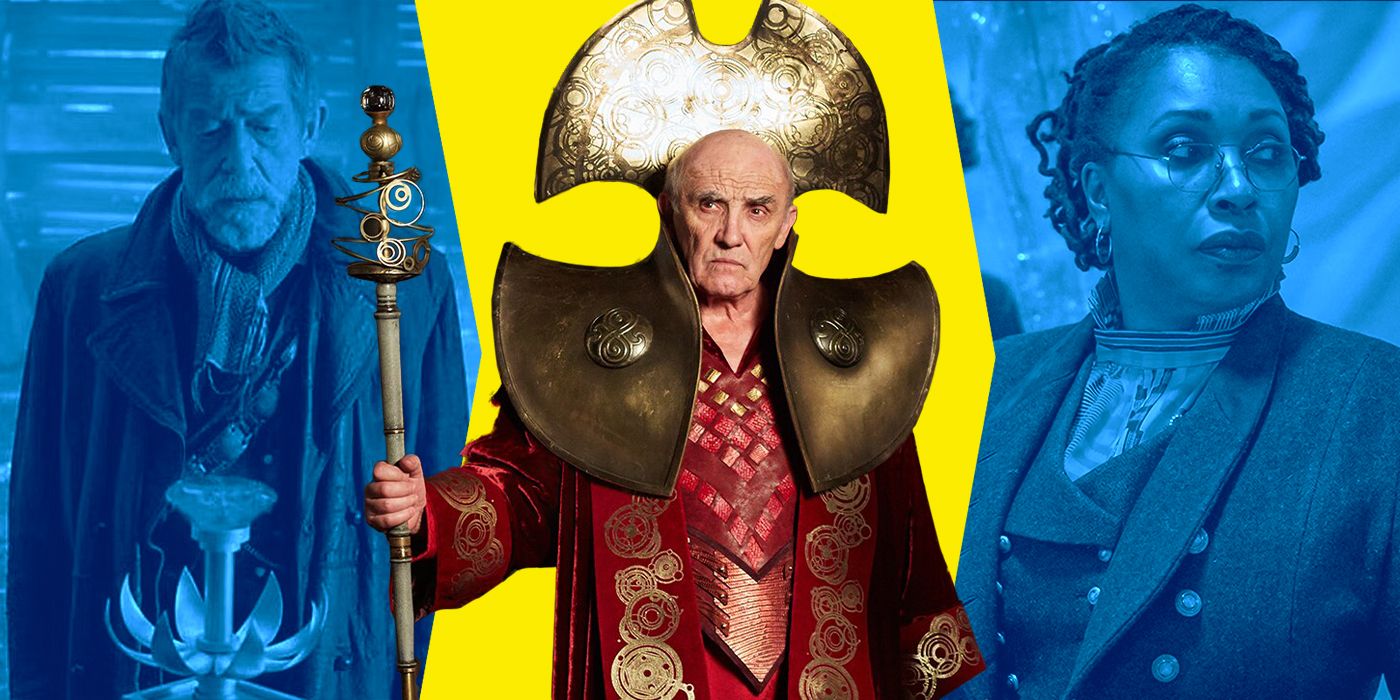
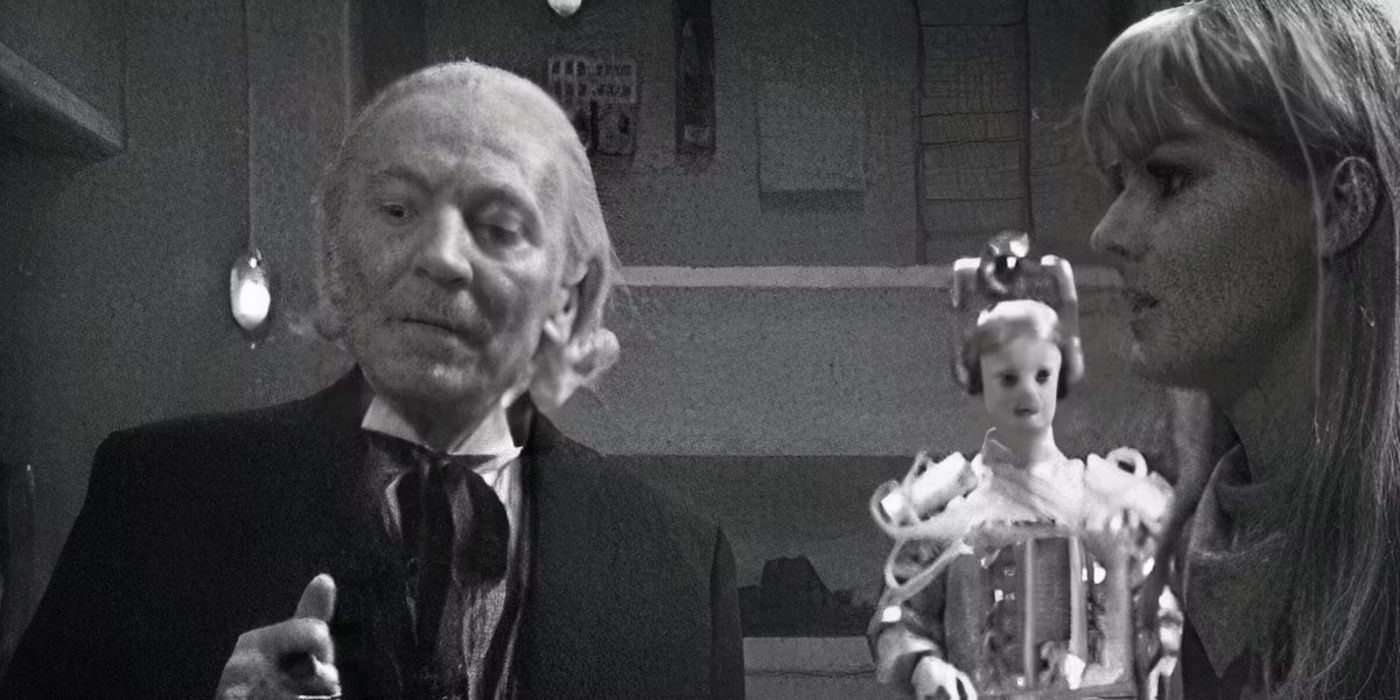
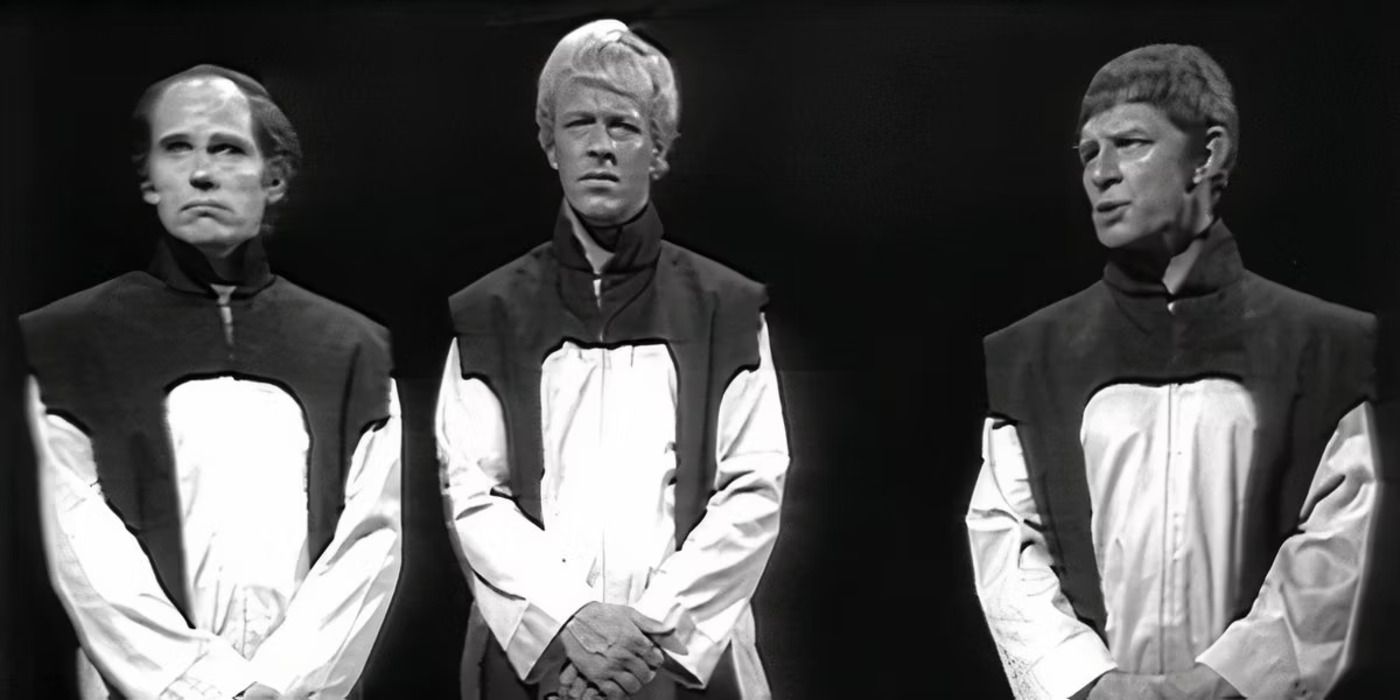
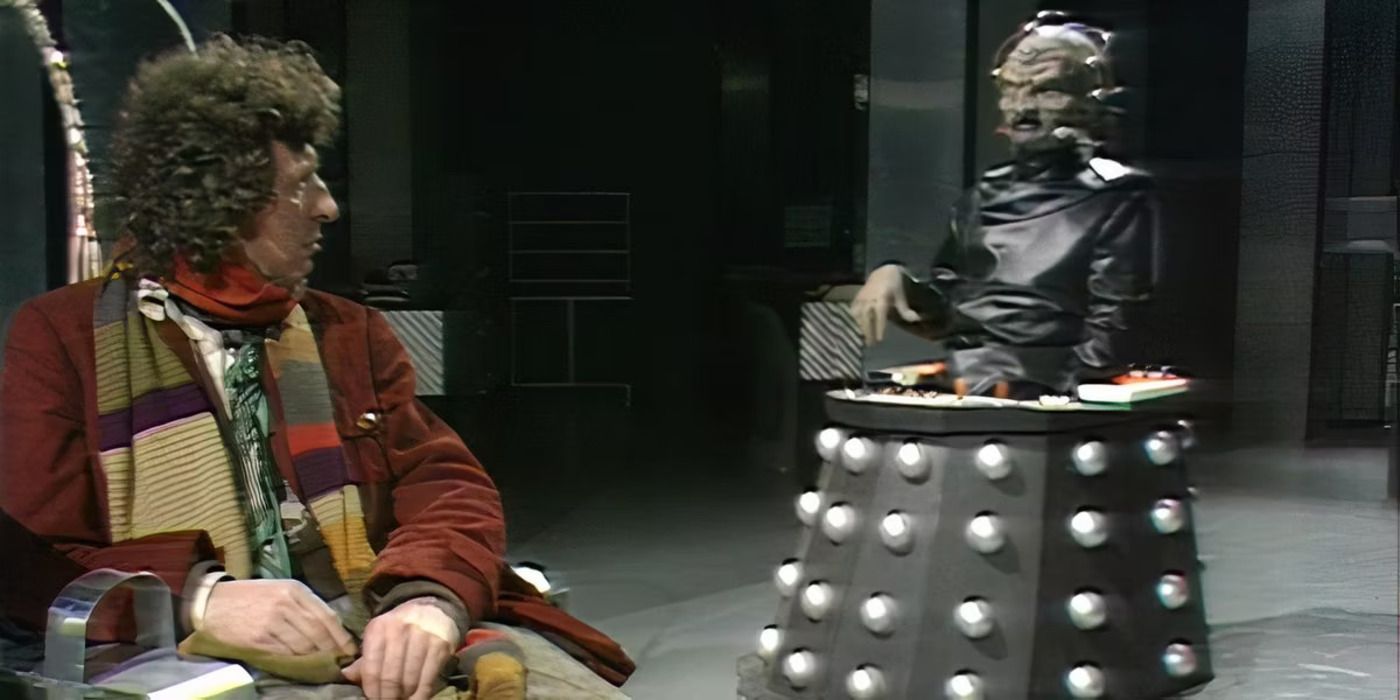
-and-‘Doctor-Who’-(2005-).jpg)
